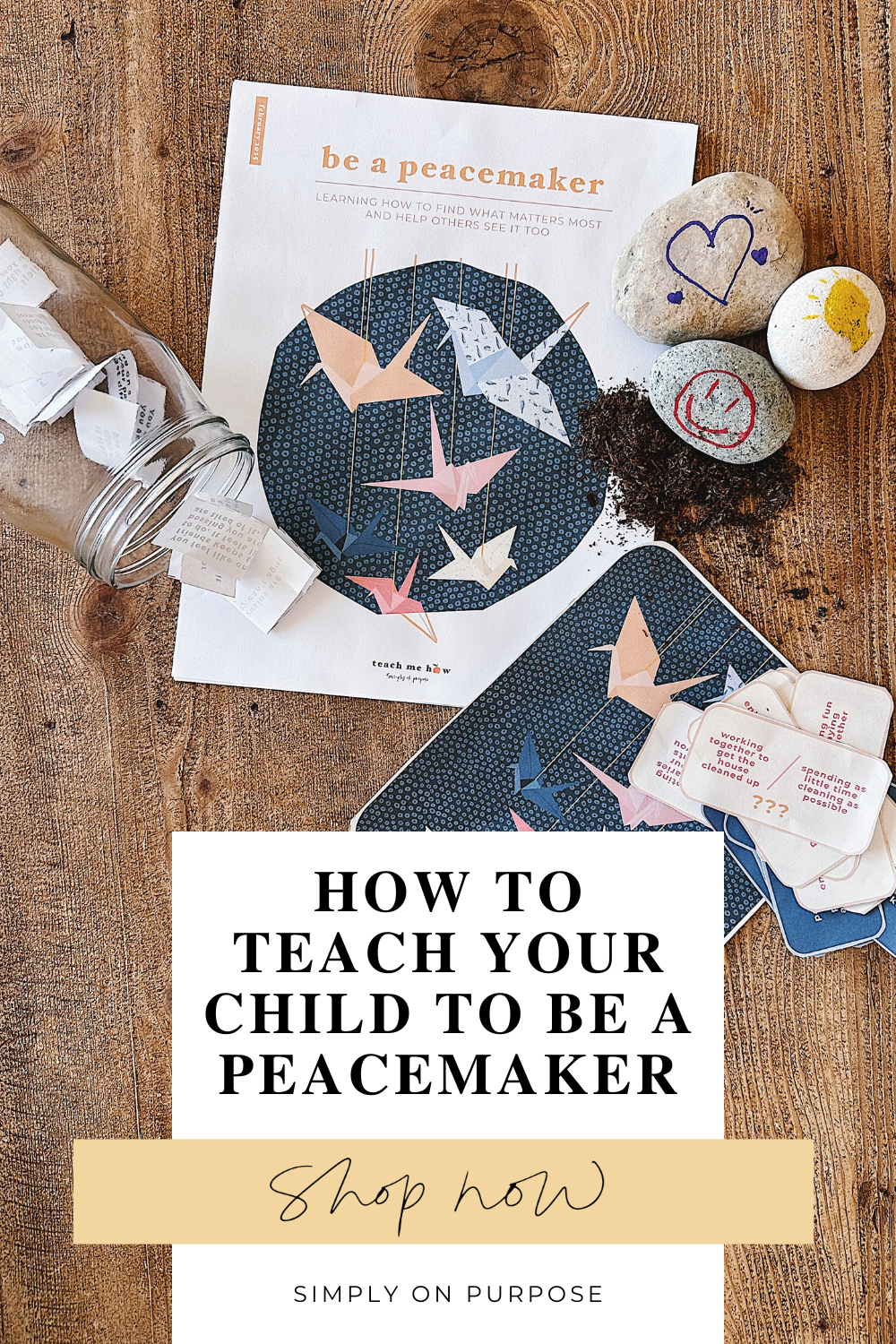In a world where conflicts are all too common, raising a peacemaker is one of the greatest gifts you can give your child—and the world. Teaching children to handle disagreements with kindness and understanding sets them up for healthy relationships and problem-solving skills that last a lifetime. Here are some simple ways you can guide your child toward becoming a peacemaker.
1. Start with the question “What Matters Most?”
When a conflict or argument arises, this question can help children pause and identify what the most important things are. Is it maintaining a friendship? Is it someone else’s feelings? Is it working as a team?
This month’s Teach Me How resource focuses on giving children lots of practice answering that question. “Be a Peacemaker: Learning How to Find What Matters Most and Help Others See It Too,” includes several components to encourage peacemaking:
- A lesson: This object lesson with rocks, dirt, and a colander helps children visualize how a peacemaker has to be brave to look through all the big feelings and identify what matters most.
- Role plays: There are a dozen common situations kids will encounter so they can practice letting go of things and being a peacemaker.
- An activity: The game “What Matters Most” has scenario cards for little kids and older kids with two choices, and they have to decide what is the most important thing long term. This game really helps kids get familiar with breaking down a situation and deciding what matters most.
2. Model Peaceful Conflict Resolution
Children learn by watching. If you handle disagreements in your own life calmly and respectfully, your child will notice. Instead of yelling or shutting down, show them what it looks like to listen, express feelings with “I” statements, and work toward solutions. Saying something like, “I feel frustrated when people aren’t ready for school on time. Can we come up with a plan together?” demonstrates how to address problems without accusing or escalating tension.
3. Teach Empathy
Peacemaking starts with understanding others. Help your child imagine what someone else might be feeling. Ask questions like, “How do you think your friend felt when you said that?” or “Why do you think your sibling is upset right now?” Simple exercises like these build their ability to show empathy and see things from another perspective, which is key to resolving conflicts peacefully.
4. Encourage Forgiveness
Peacemakers understand the power of letting go. Teach your child that holding onto anger can hurt more than it helps. Use simple language to explain that forgiving someone doesn’t mean what they did was okay; it just means you’re choosing to move forward.
If you would like to teach other values in your home, you might enjoy these resources:
- Teach Your Child Empathy – Print Shop Resource
- What To Do With the Mad That You Feel: Learning to Manage Those Big Feelings – Print Shop Resource
- Teach Your Child Respect – Print Shop Resource

